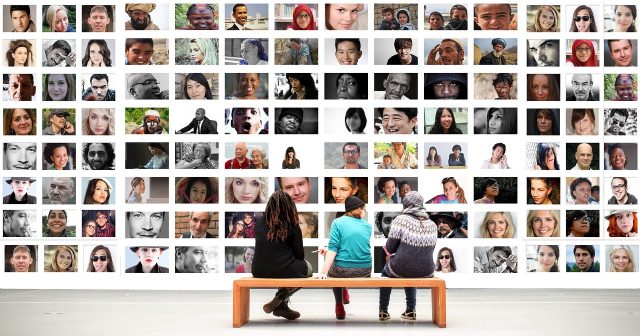In this guest post Sophie Peters, a teacher within our community, shares her views about Global Citizenship Education.
Global Citizenship Education (GCE) aims to give students, and staff, active roles in building more peaceful, inclusive, and sustainable communities, both locally and globally. GCE and inclusion must be considered and implemented together. The combination of both disciplines is essential for school development. Neither GCE nor inclusion can be simply assigned to one school subject. The success of global citizenship relies upon the interdisciplinary nature of GCE and inclusion across the whole school.
The E, the D and the I
Diversity vs inclusion: When it comes to global citizenship, schools make the same mistakes as many companies, in assuming that diversity and inclusion are synonyms. This misses the key factor – inclusion is necessary to gain the full benefits of diversity, and subsequently, to enhance outcomes.
Equity is the key component: it stipulates that school processes are adjusted so that individuals can have equality of outcome. This involves levelling the playing field where equal outcomes may not be possible without support. It should happen in the classroom, within management, as part of an approach to learning support, in parent communication, and so on. Equity takes places at the upstream level (within senior leadership) to ensure downstream outcomes which ultimately benefit students.
The Key Question….
For educators this raises a key question; how should teachers deal with bringing together the different learning requirements, which reflect the social reality, in the classroom? What is needed here are learning opportunities that are as individual as possible, backed up by sufficient resources and guidance. Simply put – something that education policy can make possible if leadership is guided by the principles of inclusivity.

Creating a school for global citizenship
So, what steps can we take in order to do this?
1. Culture rather than compliance
Global citizenship is a culture which all members of a school community have influence in creating. It is about reaching for far more than the minimum. It is an ongoing, evolving process that needs to be regularly reviewed and updated – informed by discourse and dialogue. It cannot only be realised in a top-down culture, but requires an egalitarian approach and reverse mentoring.
2. Accountability
Since all stakeholders have a part to play, they must be given specific roles. It is necessary for all stakeholders to have a role to qualify as an inclusive community.
3. Transparency
Transparency is key – lack of transparency deliberately excludes people.
4. Approaches to governance
It is crucial that school leaders decide upon relevant principles (with a recommended number of about five), and question whether activities are in line with the spirit and purpose of these standards. In situations where there is a discrepancy between actions and principles, then firm steps must be taken to close this gap.
5. Reach a tipping point
The aim is to reach a ‘tipping’ point that creates lasting change whilst avoiding common fatigue with issues such as virtue signalling and leader hypocrisy that result in negative outcomes. To avoid such fatigue, leaders should take steps such as ensuring all staff know what initiatives are being conducted and their benefits. They should also ‘walk the talk’ and put their words into visible, and measurable, action.
6. Harness the potential of a diverse team
Diversity is good for creative team performance. This can be something as simple as work history diversity, which is closely linked to increased performance. Inclusion is the harnessing of the potential of a diverse team. An exclusionary culture isn’t simply one where everyone is the ‘same’, but also one in which there is conflict within diverse teams. An inclusive culture is one where there is more creativity, unique ideas are implemented, and risks are identified.
Inclusion is a tool for reaping the rewards of a diverse workplace. Therefore, we must ask ourselves “How to be?” as a community of teachers. Are we ensuring that we are deferring to someone’s expertise? Even in diverse workplaces underrepresented voices can continue to be unheard
Tackling this requires a psychologically safe environment: one within which a shared belief is held by a team that interpersonal risk-taking is safe and that they can speak up with ideas, questions, concerns, or mistakes without risk of punishment of humiliation)
The result of structurally providing global education and equity in schools will be that school life will be more democratic, there will be increased participation of all stakeholders, and teams of teachers will be able to work on global topics in interdisciplinary projects more effectively, such as the sustainable development goals.
This is an essential part of opening a school to the outside world – it is crucial that we consider our communities, regions, nations, and the whole world as educators.

About me

Sophie is an educator with nine years of classroom-based experience as a History and Politics teacher, including five years in an international school in Vietnam. She has also worked in training teachers in circumstances with limited resources in both Cambodia and Vietnam. As a former middle leader with experience in both IB and A-level, she has found a particular purpose in working on equity, diversity, and inclusion within education.
Contact details:
Email: sge23peters@gmail.com LinkedIn: Sophie Peters
Twitter: @SophiePeters11 Instagram: dignity_ediinschools




